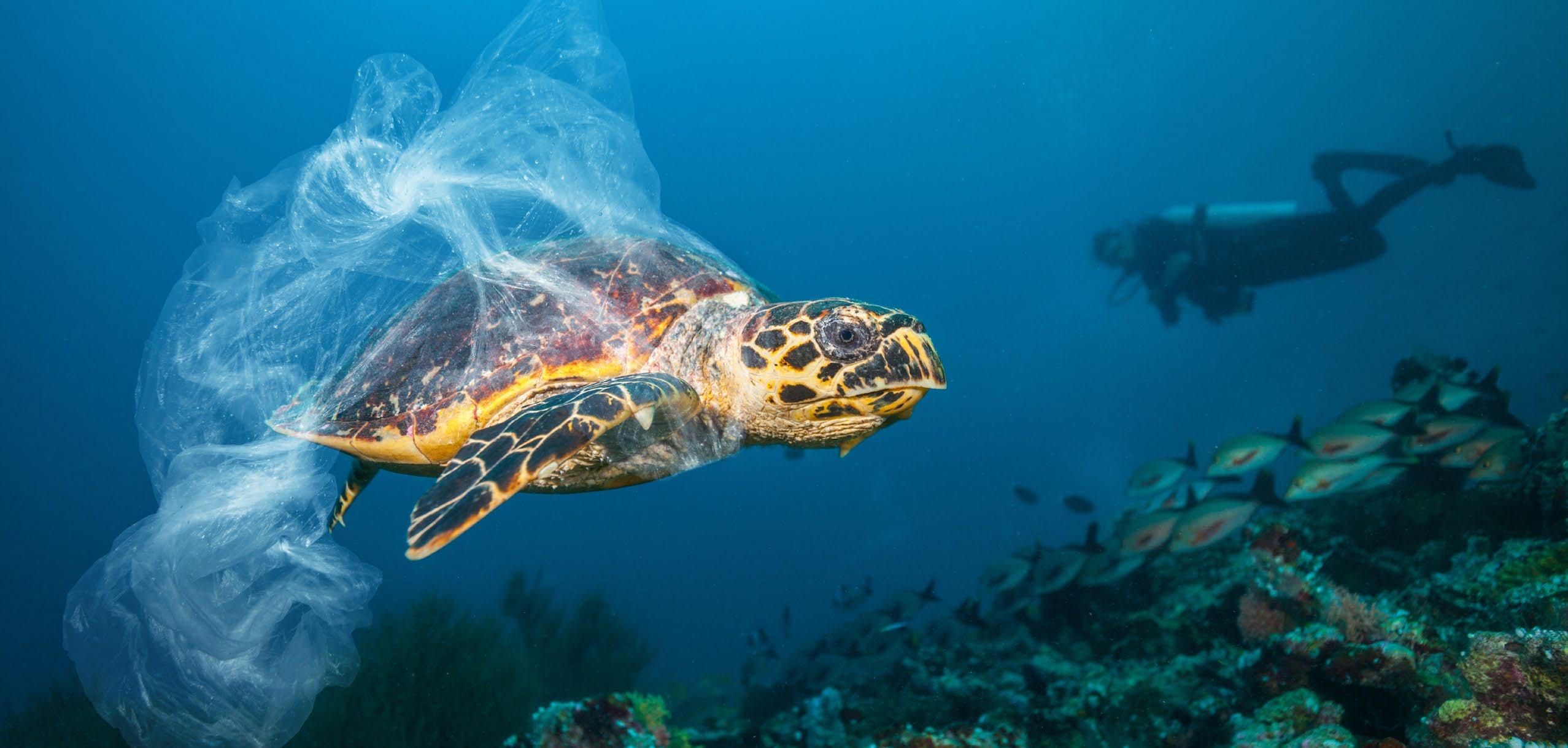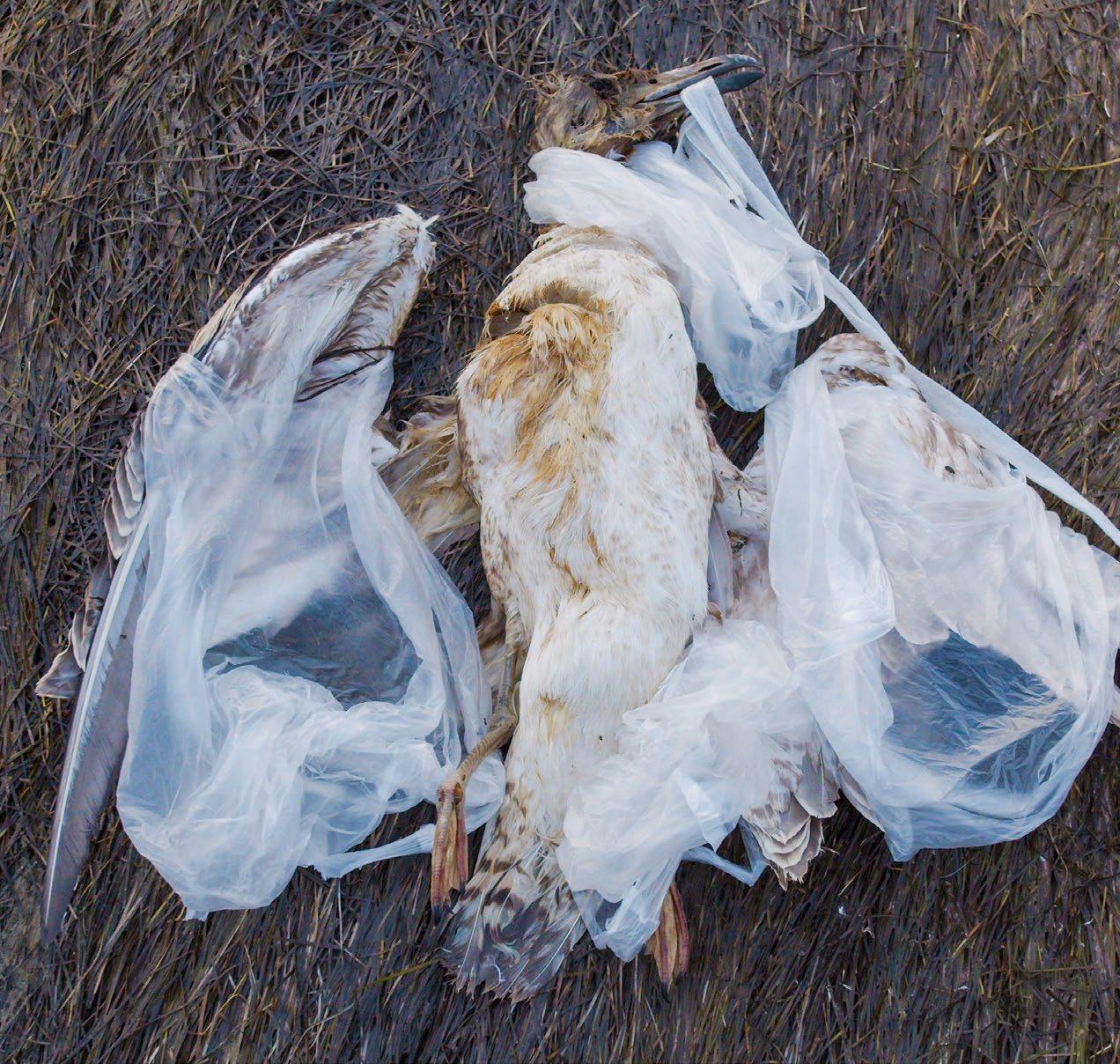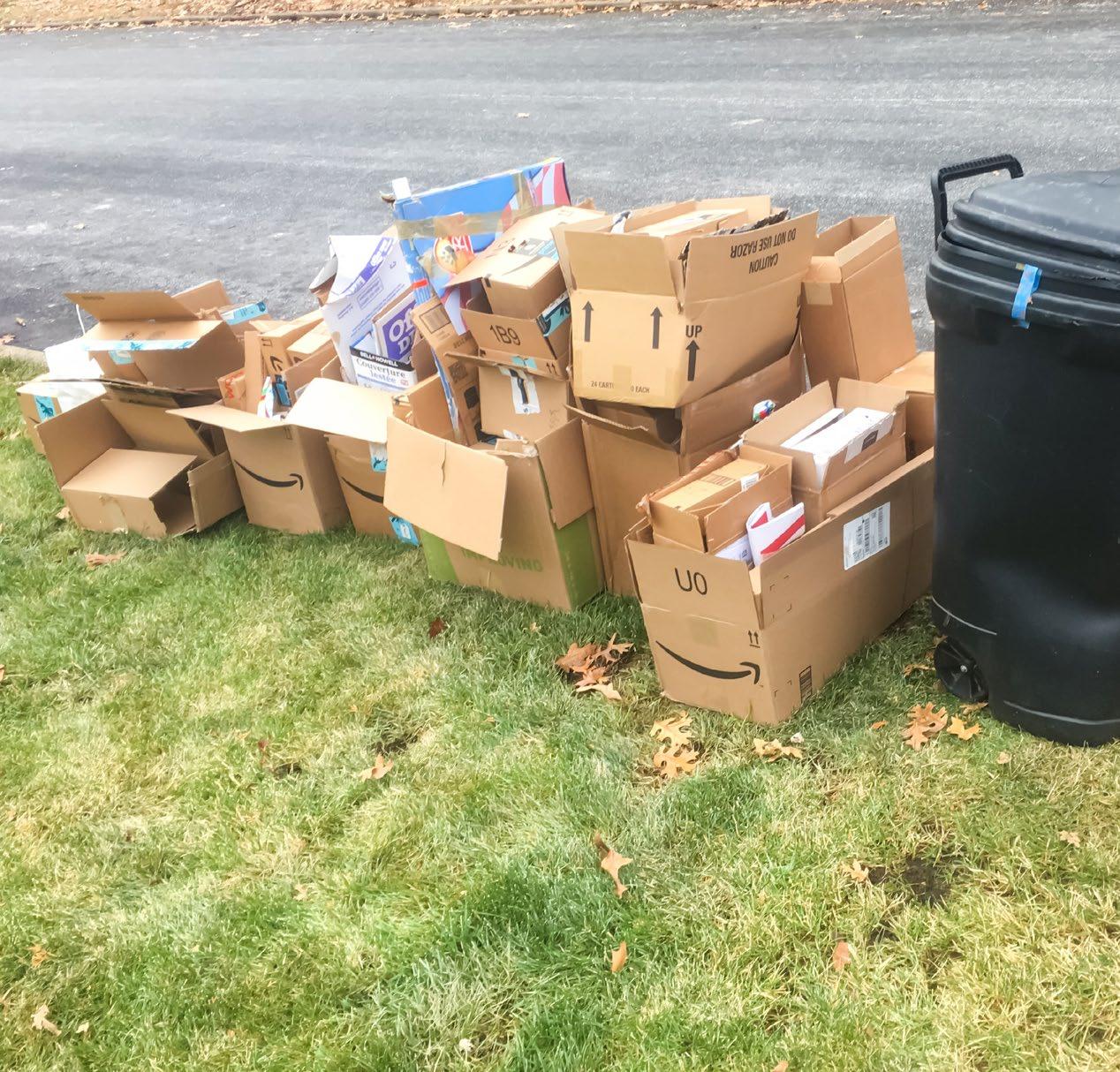
3 minute read
Plastic and the oceans
• Plastic is a major source of pollution for the world's oceans. Scientists now estimate billions of pounds of plastic wash into the ocean every year • The plastics industry expects annual production will more than triple by 2050, far outpacing recycling (only 9% of all plastic waste produced to date has been recycled) • Studies have estimated that 55% percent of sea birds, 70% of marine mammals, and 100% of sea turtles have ingested or become entangled in plastic and have found that plastic film or bags are deadliest to marine life
Plastic packaging waste is blown into rivers or the sea from landfills, floats in through storm drains, or is dumped or burned close to the shore in countries with poor or non-existent waste management systems.121 In addition to needing to dispose of their waste, some of these countries must also contend with imported plastic packaging waste shipped from countries like the UK, the U.S., and Canada.122
Peer-reviewed scientific studies have estimated that 15 million tons (33 billion pounds) of plastic wash into the ocean every year.123 This is roughly equivalent to dumping two garbage trucks full of plastic into the oceans every minute.
Plastic is everywhere in our oceans: floating on the surface, scattered across beaches and coastlines, and mostly hidden on the seafloor124 where it accumulates in underwater structures like seamounts, canyons, and escarpments.125 Plastic debris has been found washing up on the world’s most remote coastlines, melting out of Arctic sea ice, and sitting at the deepest point of the ocean floor. As plastic continues to flood into our oceans, the list of marine species affected by plastic debris expands.
Studies have found that plastic pollution is dramatically impacting life in the oceans. A recent review found that more than 900 species have ingested or become entangled in plastic, from zooplankton at the bottom of the ocean food web to seabirds at the top of it, including 55% percent of sea birds, 70% of marine mammals, and 100% of sea turtle species studied.126 Sea turtles and other animals can mistake plastic bags, like the ones used by Amazon, for jellyfish or algae – their typical food.
Research shows that sea turtles can even mistake the smell of plastic for food, often leading to a deadly outcome.127 In fact, researchers have identified plastic film as the deadliest form of plastic pollution when large marine animals interact with it.128 In a recent study, Oceana found evidence of nearly 1,800 animals from 40 different species swallowing or becoming entangled in plastic since 2009 in the U.S. Of those, a staggering 88% of the animals were from species listed as endangered or threatened with extinction under the Endangered Species Act.
129
Plastic essentially never biodegrades. Instead, once it reaches the oceans, it breaks up into smaller and smaller pieces, ultimately becoming microplastics that attract and harbor harmful chemical pollutants. When eaten by fish and shellfish, some of the contaminants attached to microplastics work their way into our food supply.130,131,132 Everything from salt to honey to beer has been found to contain microplastics.133 Scientists are still studying how humans might be affected by the plastics that are making their way into our food, water, and air.
A sea turtle entagled in plastic film. Sea turtles can mistake plastic waste for food. ©Shutterstock / Jag_cz

Amazon packaging waste. ©Shutterstock/ Veronica Winters A dead seagull entangled in plastic waste. ©Shutterstock / aerophoto











